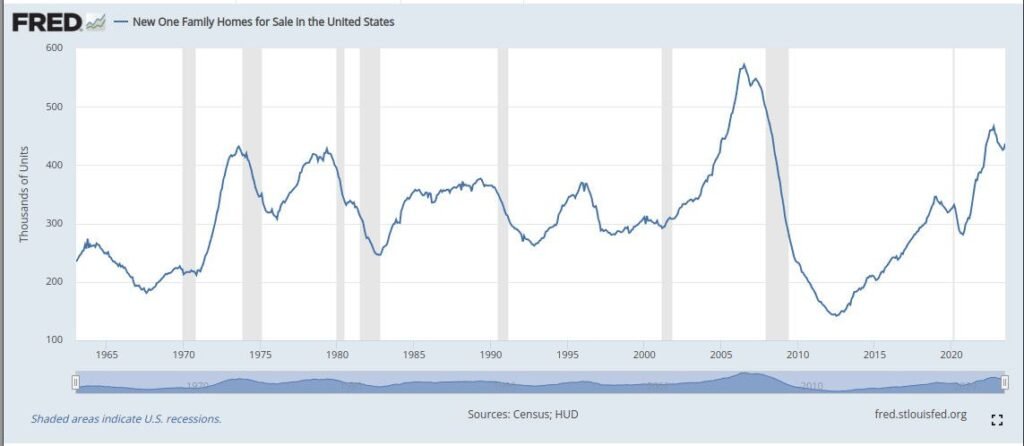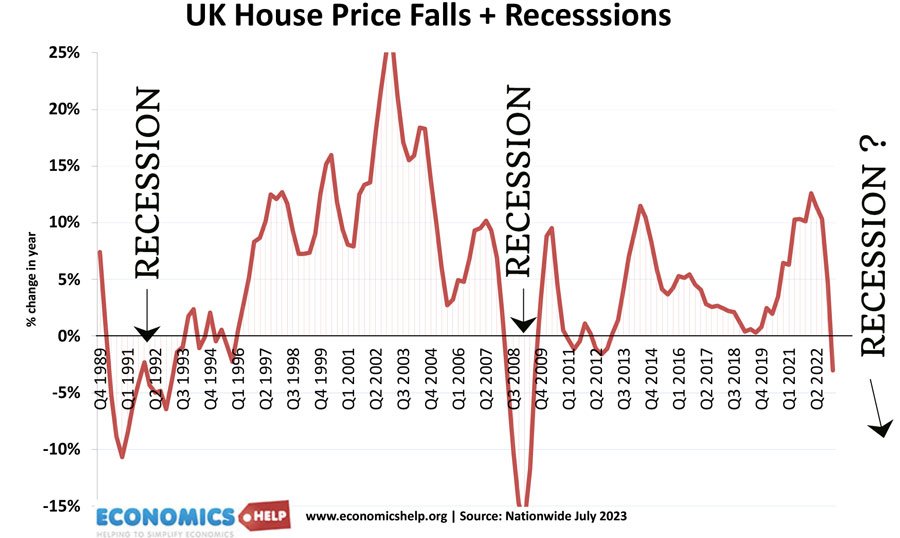SINKING Housing Market DEVASTATING THE ECONOMY
Hey there! Just wanted to share some insights on the current state of the housing market and its ripple effects on the economy. With record low sales volume and high interest rates, the housing market is facing some challenges. This is not just impacting the real estate sector, but also other industries like furniture sales, home improvement, and electronics.
As existing home sales hit a 13-year low and businesses struggle with lay-offs and closures due to high interest rates, it’s important to acknowledge both the positive and negative economic trends. While home builders see a surge in construction and optimism about home buyer demand, they are forced to slash prices due to high inventory. The disparities in economic realities across different regions call for a holistic perspective on the effects of the sinking housing market on the broader economy.
Sinking Housing Market Impact
The current state of the housing market is witnessing a significant downturn in terms of sales volume. This decline is not limited to just the real estate industry; it is having a ripple effect on other sectors as well. From furniture sales to home improvement, and even electronics, all are feeling the impact of the lack of sales in the housing market. The high interest rates prevailing in the market are also exacerbating the situation, making it challenging for potential buyers to enter the market or invest in property.
Housing market at record low sales volume
The record low sales volume in the housing market is a cause for concern. As home sales continue to plummet, the repercussions are felt across various industries that rely on a robust housing market for their business. The lack of activity in the real estate sector is not just an isolated issue; it is affecting the economy as a whole.
Lack of sales affecting other sectors like furniture, home improvement, electronics
The decline in home sales is trickling down to other sectors, impacting businesses that are closely tied to the real estate industry. From furniture stores to home improvement retailers, the decrease in home sales is translating into lower consumer spending across the board. This domino effect highlights the interconnectedness of various sectors within the economy.
High interest rates impacting housing market and related industries
The high interest rates prevailing in the market are adding another layer of complexity to the already sinking housing market. With borrowing costs on the rise, potential homebuyers are deterred from making purchases, further dampening sales in the real estate sector. The impact of these high interest rates is not limited to just the housing market but is also affecting related industries that rely on consumer spending generated by real estate transactions.

Existing Home Sales Decline
Existing home sales are currently at a 13-year low, painting a bleak picture for the real estate market. The effects of rate hikes by the Federal Reserve are being felt across various industries, leading to job losses and decreased spending in the economy. Retail giants like Home Depot are experiencing a downturn in sales, reflecting the broader impact of the declining real estate market on the retail sector.
Existing home sales at a 13-year low
The steep decline in existing home sales is a critical indicator of the challenging conditions in the real estate market. With sales hitting a 13-year low, it signals a significant slowdown in activity within the housing sector. The prolonged downturn in home sales is alarming and requires attention to address the underlying issues contributing to this decline.
Effects of rate hikes felt across various industries
The rate hikes by the Federal Reserve are reverberating across different industries, creating a ripple effect in the economy. As borrowing costs increase, consumers are reluctant to commit to real estate transactions, leading to a decrease in sales volume. The repercussions of these rate hikes extend beyond the real estate market, impacting job security and consumer spending in related sectors.
Home Depot sales down for four quarters in a row
The retail sector is feeling the pinch of the declining real estate market, with retail giants like Home Depot witnessing a downturn in sales for four consecutive quarters. The decrease in consumer spending on home improvement products and services is directly linked to the sluggish real estate market. The challenges faced by retailers serve as a barometer for the broader economic impact of the housing market downturn.
Real Estate Sector Challenges
The real estate sector is facing significant challenges, with employment stagnating and the industry grappling with a looming recession. While home builders are benefiting from an increased demand for new homes, there are concerns about the overall health of the industry. The surge in construction activity may lead to a potential increase in available inventory in rental and existing housing markets, offering a glimmer of hope amidst the challenges.
Employment in real estate sector stagnating, industry facing recession
The stagnation in employment within the real estate sector is indicative of the broader challenges faced by the industry. As home sales decline and economic uncertainties persist, real estate professionals are experiencing a slowdown in business activity. The looming specter of a recession further compounds the challenges faced by the real estate sector, necessitating proactive measures to navigate the turbulent market conditions.
Home builders benefiting from surge in construction
Despite the overall downturn in the housing market, home builders are experiencing a surge in construction activity driven by a demand for new homes. The increase in housing starts reflects a positive trend for the construction industry, offering opportunities for growth amidst the prevailing challenges in the real estate sector. The prospect of a higher inventory in rental and existing housing markets may alleviate some of the pressure on the industry.
Housing starts at highest level since May 2023
The recent uptick in housing starts indicates a renewed momentum in the construction sector, with activity reaching its highest level since May 2023. This surge in construction activity bodes well for the real estate industry, offering potential relief from the downturn in home sales. The increase in housing starts may lead to a more robust inventory in the rental and existing housing markets, providing opportunities for prospective buyers and renters.

New Construction Trends
The construction sector is witnessing positive trends, with numbers for new construction on the rise for both multifamily and single-family homes. While home builders are optimistic about home buyer demand, they are facing challenges related to high inventory levels. Home building activity is particularly up in the Northeast region, addressing supply shortages and capitalizing on the demand for new homes.
Numbers for new construction up for both multifamily and single family homes
There is a noticeable increase in new construction activity for both multifamily and single-family homes, indicating a positive trend in the construction sector. Home builders are capitalizing on the demand for new homes, driving growth in construction activity despite the prevailing challenges in the real estate market. The uptick in new construction reflects a resilient industry that is adapting to changing market conditions.
Home builders feeling optimistic about home buyer demand
Despite the challenges in the housing market, home builders remain optimistic about home buyer demand. The surge in construction activity signals a growing interest in new homes, providing opportunities for the industry to capitalize on changing consumer preferences. While optimism prevails, home builders are also facing the reality of high inventory levels, necessitating strategic pricing strategies to attract buyers in a competitive market.
Home building up in the Northeast, addressing supply shortage
The Northeast region is experiencing a notable increase in home building activity, addressing supply shortages and meeting the demand for new homes. This regional trend reflects the resilience of the construction sector in adapting to market dynamics and consumer preferences. By addressing supply shortages and increasing housing inventory, home builders in the Northeast are positioning themselves to cater to the evolving needs of homebuyers in the region.

Impact on Businesses
The impact of high interest rates on businesses is becoming increasingly evident, leading to layoffs and closures across various sectors. Small business owners are struggling to afford hiring due to the rising borrowing costs, creating challenges for sustaining operations and growth. The examples of businesses affected by high interest rates and facing bankruptcy highlight the urgent need for proactive measures to navigate the uncertain economic landscape.
High interest rates leading to layoffs and closures
The high interest rates prevailing in the market are contributing to layoffs and closures in businesses across different sectors. As borrowing costs increase, businesses are facing challenges in sustaining operations and profitability, leading to difficult decisions regarding workforce management and overall business viability. The economic impact of high interest rates is felt keenly by businesses, necessitating strategic planning to mitigate the risks.
Small business owners struggling to afford hiring
Small business owners are grappling with the burden of high borrowing costs, making it challenging to afford hiring and expansion. The rising interest rates have created financial constraints for small businesses, limiting their ability to invest in growth opportunities and workforce development. As businesses struggle to navigate the economic uncertainties exacerbated by high interest rates, the need for proactive financial management becomes paramount to weather the storm.
Examples of businesses affected by high interest rates and bankruptcy
The adverse effects of high interest rates are starkly evident in businesses that are facing bankruptcy and financial distress. From retail establishments to service providers, businesses across various sectors are feeling the impact of rising borrowing costs, leading to closures and layoffs. The stories of businesses succumbing to the challenges of high interest rates serve as cautionary tales of the importance of financial resilience and adaptability in a volatile economic environment.
Risks and Uncertainties
The current economic landscape is fraught with risks and uncertainties, as businesses navigate the challenges posed by high interest rates and market volatility. With businesses taking risks to stay afloat and uncertain economic future looming, the need for a comprehensive understanding of both positive and negative economic trends is imperative. As discrepancies in economic realities across different regions persist, businesses must remain vigilant and adaptable to thrive in a dynamic marketplace.
Businesses taking risks with loans to stay afloat
In the face of economic challenges and high interest rates, businesses are increasingly resorting to taking risks with loans to stay afloat. The pressures of rising borrowing costs and financial constraints are prompting businesses to seek external funding sources to support operations and sustain growth. While the risks associated with borrowing are inherent, businesses must carefully evaluate their financial strategies to secure their long-term viability in a turbulent market environment.
Discrepancies in economic realities across different regions
The discrepancies in economic realities across different regions underscore the complexities of the current economic landscape. While some areas may be experiencing growth and opportunity, others are facing stagnation and uncertainty. These divergent economic trends highlight the need for businesses to adapt their strategies to suit the unique challenges and opportunities present in their respective regions. By acknowledging the nuances of regional economies, businesses can make informed decisions to navigate the complexities of the marketplace.
Importance of acknowledging both positive and negative economic trends
The importance of acknowledging both positive and negative economic trends cannot be understated in the current climate of uncertainty. While challenges abound in the form of high interest rates and market volatility, there are also opportunities for growth and innovation for businesses willing to adapt and evolve. By embracing a nuanced understanding of the economic landscape, businesses can position themselves strategically to capitalize on emerging trends and navigate the risks inherent in a dynamic marketplace.


